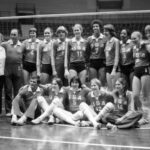Always Running is an autobiographical book about Luis Rodriguez’s experiences as a Mexican-American growing up in East Los Angeles. The book is divided into ten chapters, which is significant because the number ten represents a return to unity. Rodriguez begins as a boy who does not belong anywhere, and finishes his story as a respected member of society. By ending up as a respected member of society, Rodriguez is united with his community and is reunited within himself. As a boy, he constantly battles himself about his worth as a human being, but as a man, he finally comes to terms with his identity. Written in 1993 for his son Ramiro as an attempt to steer his son away from “la vida loca,” Rodriguez carefully describes all his experiences of first being a victim, then being a victimizer as part of several gangs, then being a victim again when he moves away from his life of constant violence and struggle and has to deal with the consequences.
This is a story of self-discovery. A young boy finds himself thrown into a world that does not accept him; as a result he becomes a victim. Not knowing what else to do, this young boy seeks protection through violence and his peers. As he grows up and learns to think for himself and question everything, he learns he does not need to be ashamed of his family or heritage, and he works to gain respect in his community. Part of Rodriguez’s heritage is speaking Spanish. Therefore, he often incorporates Spanish words and phrases into the text. In order for everyone to have a clear understanding, he includes a glossary in the back of the book with an English translation for every word he uses. This makes the book easily accessible to everyone; it also gives the reader a sense of how important Rodriguez’s culture is to him.
For the most part, this book is written in chronological order. Each major event signifies a different stage in Rodriguez’s life. However, sometimes events are repeated and sometimes less significant events are out of order. This makes parts of the story confusing, as the reader has to take some time out to understand what’s going on and where to place the event in the author’s life.
Rodriguez writes in a very flowery, poetic way which makes the stories come to life; many memories of people who Rodriguez has seen die as a result of the gang life touches the reader and makes these events seem as if they were happening today. It is very easy to sympathize with the author; the reader can clearly see where he is coming from and why he acts the way he does. However, he often justifies his violent actions. In this way, he is like the character Clemencia in Sandra Cisneros’ “Never Marry a Mexican.” Like Rodriguez, she justifies all her actions. But also like Rodriguez, although there may be a reason behind the action, it does not always make the action right.
The most descriptive parts of the story are when Rodriguez writes about women he’s either been with or was merely attracted to. He shows no hesitation when describing how intimate he is with these women, and he uses many similes to emphasize how beautiful he thinks these women are. To Rodriguez, the images of these women are very important for the reader to imagine. For example, he describes one of his first loves, Viviana, as “looking like delicate earthenware, glazed in honey” (88). The way he describes his women gives the reader insight into how Rodriguez thinks of women. He obviously treats them with respect, since he sees them as fragile, sweet objects. There are many women mentioned in this book, and Rodriguez is very free and bold when recounting these memories. He is not afraid to share his hopes, feelings of excitement, and even feelings of rejection and hurt. Every moment spent together is described in detail, including Rodriguez’s thoughts during these moments, and the women are always remembered fondly and with respect. Women are an important aspect of Rodriguez’s life; even though he spent the majority of his time with his homeboys, he always valued and respected women.
A majority of the book is written in dialogue. This makes the book more interesting and easier to read. It also helps the reader see and understand events better. By seeing how the characters interact with one another, the reader gets a better sense of how each character feels about the other and can draw more conclusions about why things turned out as they did. For example, the dialogue between Rodriguez and his peers a few nights before they shoot at him helps the reader understand that his peers no longer respect him and will no longer protect him. In fact, he has become a liability and they feel they need to get rid of him because he no longer believes in continuing the violence and fighting back to avenge his gang. Because of this, his peers call him a “pinche puto” (208) and tell him that “nobody messes with us” (209). The reader can clearly see these words serve as a warning to Rodriguez. It foreshadows what they do to him later.
Always Running is an eye-opener in to the life of Chicanos, particularly those who grew up in Los Angeles. In the book, all policemen are depicted as evil forces who do not treat Chicanos as real human beings and who start wars between gangs. They are the ones who ensure there is no peace. This contradicts everything they stand for, and consequently people in the barrios do not trust the police. In fact, Rodriguez refers to them as another gang. To people living outside east LA, this is hard to believe because one does not often see policemen mistreating the very people they are hired to protect.
This book was written for anyone willing to read it. Although it is a page-turner, Rodriguez did not write it to appeal to the masses. He wrote it as a way of expressing himself, and in a sense to experience catharsis. By the end of the story, it is clear the author has finally figured out who he is and what type of person he wants to become, and he is now on the path to achieving his goals. As also explained in the two introductions and epilogue, this story was meant to sway Rodriguez’s son from becoming a gang member and hopefully to also sway other teenagers to not choose what he refers to as “the crazy life.” The things Rodriguez has endured and the number of shootings and beatings he has survived seems unrealistic. Although there is no reason to doubt all these events did happen, the fact that they happened so often may make readers less inclined to believe all these stories and consequently may make it less successful in persuading people to turn away from the gang life.
Reading this book makes one question the definition of being normal. For Rodriguez and his peers, the idea of normal is very different from someone who grew up in Orange County. Normal for Rodriguez is survival, whereas normal for a kid growing up in a different area may simply mean going to school everyday and eating dinner every night at seven. It reveals just how sheltered some people really are. This is a good way of exposing people to different cultures and lifestyles, and if readers can accept this, they can be more accepting and tolerant of other people. If this book does evoke in the reader a feeling of sympathy and a thought that things need to change, then it is successful. If it has managed to persuade just one person to turn away from “la vida loca,” then it is successful. It is easy to agree with the author that no one chooses “la vida loca,” it is just they feel they have no other option. This book makes the reader want to see change, and possibly help make changes. And for that, it is an important literary work.



